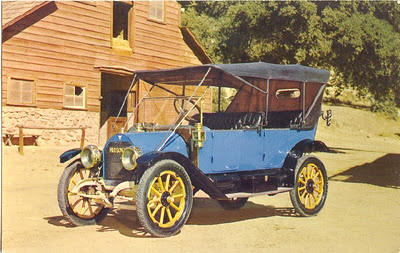1952 was the beginning of significant
problems with racing programs at the fairgrounds track. Both the Champlain
Valley Exposition track and one at the Vermont State Fairgrounds in Rutland
were simply not appropriately outfitted for the increasingly – fast auto races
that were on – going by the 1950’s. The only barrier was a three – foot high
wooden rail fence that, at once, gave spectators a false sense of security and
which would splinter into deadly missiles of wood on hard contact by a metal
race car. Famous open wheel driver, Bill Schindler and prominent stock car
driver Pete Corey both lost legs to these barriers in the 1950’s.
Then, too, the CVE surface was almost
impossible to maintain. The track management, perhaps better suited to deal
with horses, would pour hundreds of gallons of water and calcium chloride on
the track only to have the baking afternoon sun dry it out. The result was
serious holes, ruts, and billowing clouds of dust that blanketed spectator and
driver, alike. In 1952, the promoters of the Malletts Bay Raceway in
Colchester put on a racing program at the fairgrounds on the July 4th
weekend. One of Carl Trayah’s few racing triumphs was overshadowed by the
death of Arthur Bessette, a mechanic.
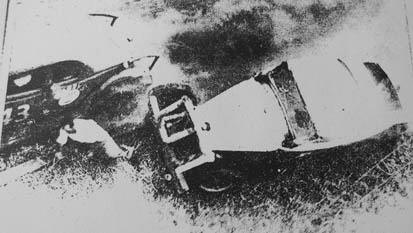
Burlington Free Photo Courtesy of Emerson
This sensationalized
photo shows Arthur Bessette, about to be struck by the white car of Clyde
Yarnell, with the Ellis car narrowly missing the man.
Bessette, who sometimes did some tech
inspections at one of the local tracks, was severely inebriated at the July 4
races and had been sent away from the grounds. Without officials knowing it,
he had hailed a taxi and returned to the races. For some unknown reason, he
was insisting on standing almost on the racing surface. Cars driven by Clyde
Yarnell, Sr,. and Arthur Ellis locked wheels and careened into the infield at
the very spot Bessette was. Deputy Sheriff Sid Gordon was nearly hit, too as
he struggled to pull Bessette out of the path of the cars.
The local Burlington Free Press, while
minimizing the race results, sensationalized the Bessette tragedy with photos
of him about to be struck and of his body, lying near the track covered with a
blanket. Yarnell was so distraught he barely could sleep for months. This
incident, along with another spectator accident at the nearby Colchester
Raceway would cause States Attorney Lawrence DeShaw to try preventing further
stock car racing, using the Sunday Blue Laws from the past century.
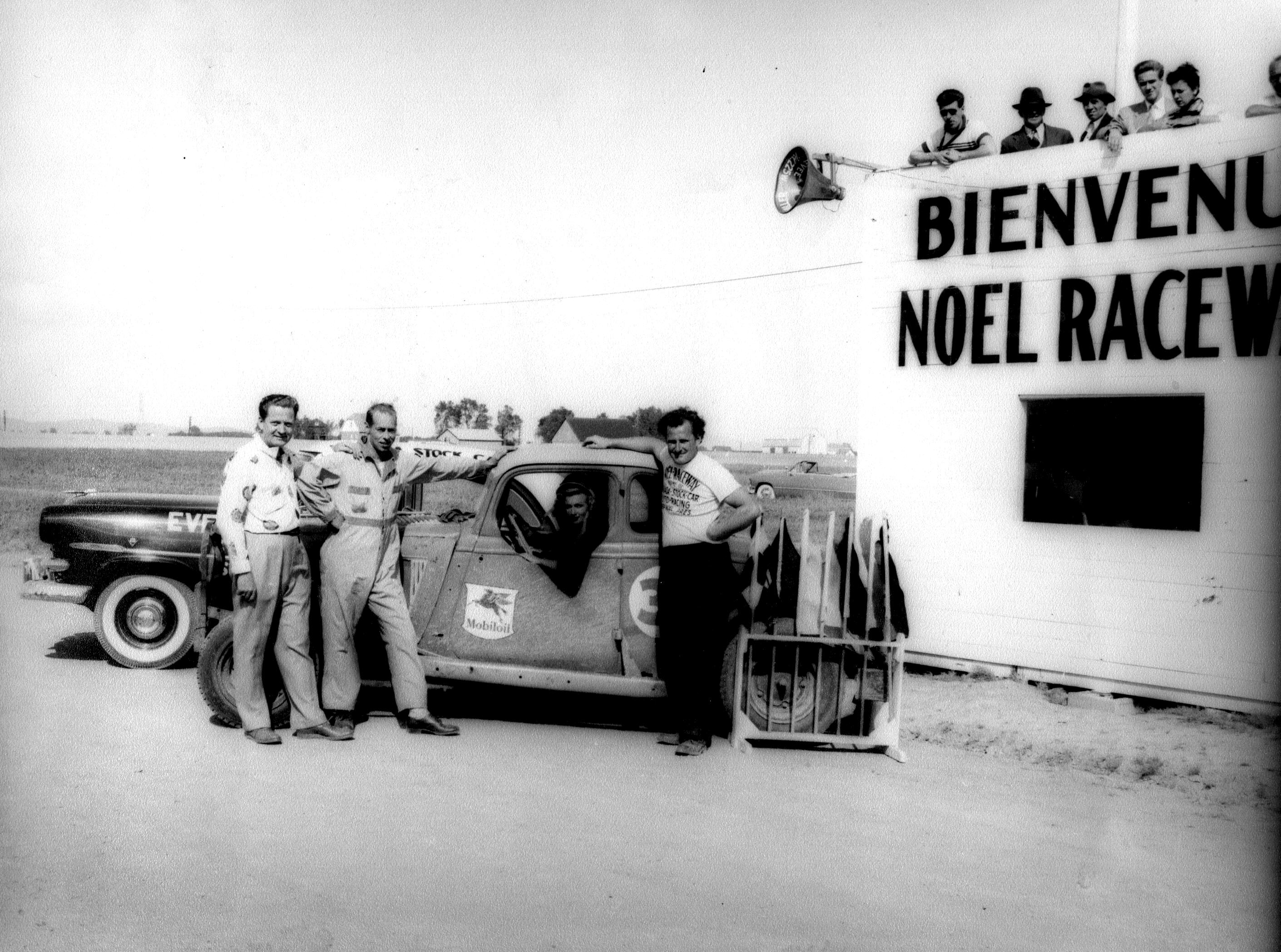
Owen Family
Collection
Gordy Owen [above,
2nd from left] and Bob Bushey [below looking at camera] were two
Chittenden County stock car stars who not only ran stock car races at CVE but
who sought rides in open wheel cars, too.
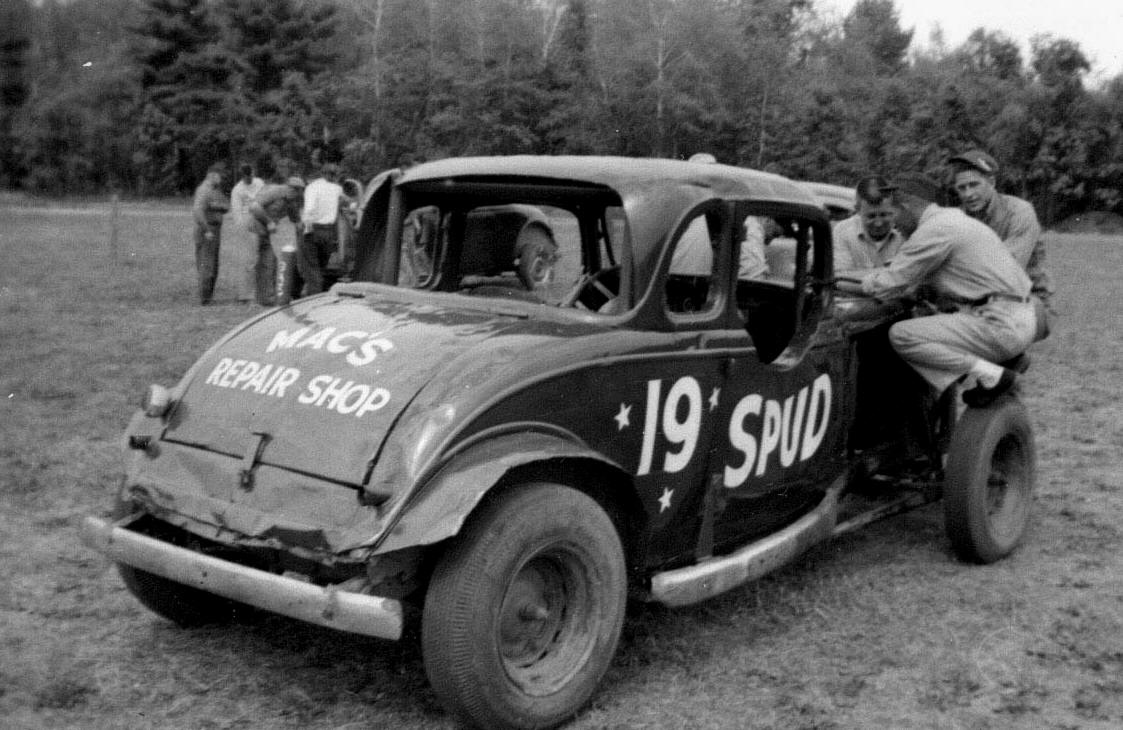
Bushey Family Collection
Open wheel racing continued from that
time, until almost 1980 at the CVE track, under the auspices of various
sanctioning bodies and featuring the stars of whichever era was in effect.
Another stock car program was run in 1954, under the banner of the United
Stock Car Racing Club, run by Harvey Tattersall. Local stars Bob Bushey and
Gordy Owens ran, along with several out – of – state stars, the best known of
which was future four – time NASCAR National Sportsman Champion Rene Charland,
then running out of Holyoke, MA.
That USCRC event went off without many
problems; but, ironically, it was the same Tattersall group that appeared at
the fairgrounds in Rutland in 1963, featuring their “Grand American” division
of new or nearly new late model race cars. In that race, Bob Devine, running
third behind Roy Halquist and Dick Dixon, veered off the backstretch, through
the flimsy three – foot rails, and sheared off the leg of a woman simply
standing by her car, taking a break from walking around at the fair. Devine
told me in 2011, he still could not deal well with that memory.
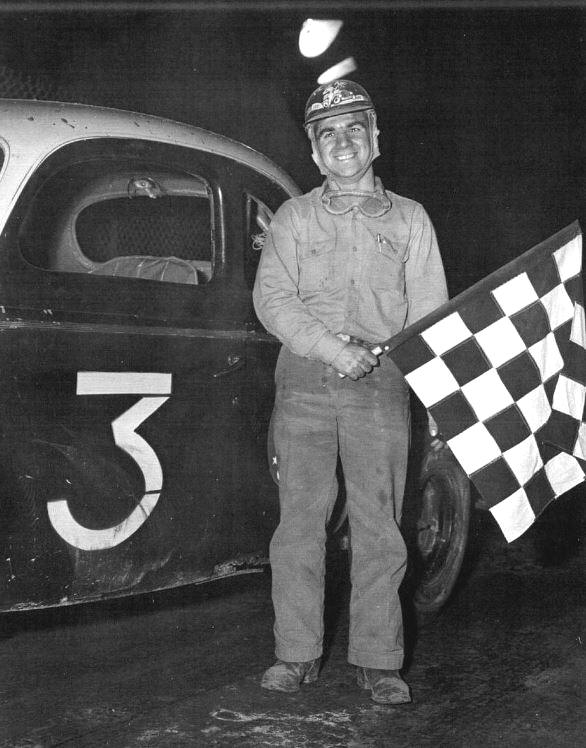
Courtesy of Cho Lee
Rene Charland, shown
here around 1954, may well have been the most accomplished of all the racers
who drove at the CVE fair track. he won the NASCAR National Sportsman
championship four years in a row in the 1960’s. This early car
could be where his trademark #3 came from.
The Champlain Valley Exposition open wheel
races would go from the sanction of the AAA, to the United Racing Club. It was
in this sanction, in 1960, that Billy McDonald, driving Peterson’s old
sprinter, achieved a 4th place finish in the feature – the best
ever done by a Vermonter in such races. The fair eventually switched to the
ARDC, a midget racing group, which afforded the crowd the only chance in
Vermont to see future legend Mario Andretti race. Despite the smaller cars,
the accidents and spectator injuries continued. The URC did continue to stage
races, as well, and fans were treated to several performances by one of the
greats of that time – Hank Rogers.
The open wheel races at the fair, while
troublesome, did treat locals to stars like Hinnershitz, Rogers, Red Riegel,
DePalma, Oldfield, Bobby Courtwright, Len Duncan, Joe Csiki, Dutch Schaeffer,
Don Gillette, Lou Johnson, King Carpenter [who could briefly run at Thunder
Road], future Indy driver Steve Krisiloff, Dick Tobias, Leroy Felty, and
more. They also heard to announcing of such nationally – famous men as Chris
Economaki [National Speed Sport News] and Vermont’s own Ken Squier. The last
race was an ARDC affair in 1981, after which the need for parking room and a
stage area for the rapidly – expanding fair concerts caused the track to be
destroyed.

Courtesy of
Jim Howard
A very young Ken
Squier [above] and the already – famous Chris Economaki both announced racing
at CVE. At least Chris didn’t have to announce during a fatality, as did
Squier with the death of Arthur Bessette.

From The Vintage Racer.Com
Amazingly, in almost 50 years of auto
racing on an inadequate track, only two or three drivers were hurt badly
enough to require hospitalization. The Bessette death, clearly not entirely
the fault of the management, left the biggest blot on the memory of racing
there. Legendary local stock car racing star Harmon, Beaver” Dragon, from
nearby Milton, never raced there but recalls being shocked, as a youngster, to
twice see midget drivers remove a artificial leg to climb into their cars. One
of these was Pete Corey, usually a New York stock car driver. The other was
probably Bill Schindler.
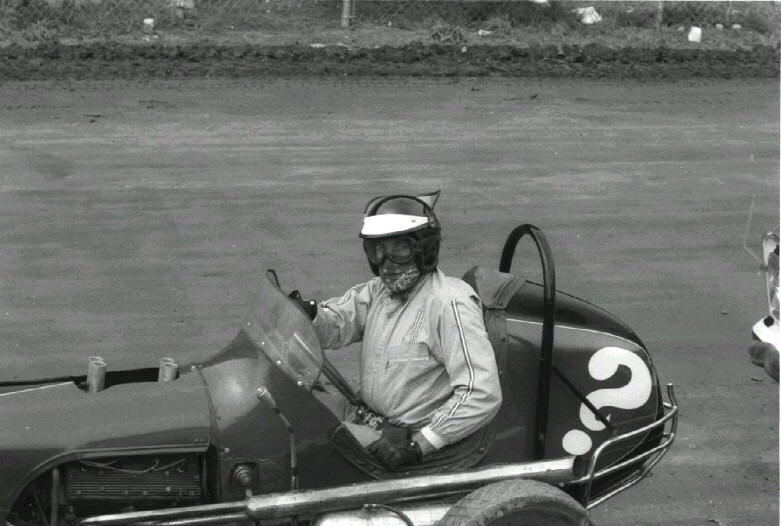
Dragon Family Collection
Beaver Dragon did
try out Bob Riley’s midget, but not at Essex Junction.
From 1923, when a Winooski man named
Ryerson drove a Hudson touring car to a win over some other local men with
supposedly faster stripped – down cars – to second – generation open wheel
driver Hank Rogers, Jr.’s win in an ARDC midget in 1981, the Champlain Valley
Exposition tried bravely to stage acceptable and entertaining car races at
their half – mile horse track. They certainly had a variety of classes and
plenty of the type of “action” the casual fair – goer wanted. Not serious race
fans, these “goers” wanted to see accidents – and they got that, along with
their Sunday best fair outfits being covered with dirt.
The Rutland fairgrounds, which I attended,
weren’t much better. With the CVE track gone and the Rutland venue being
positively forbidden to stage car racing, it appears as though fair car races,
at least in Vermont, are a thing of the past. And probably, judging from the
carnage , it is a good thing.
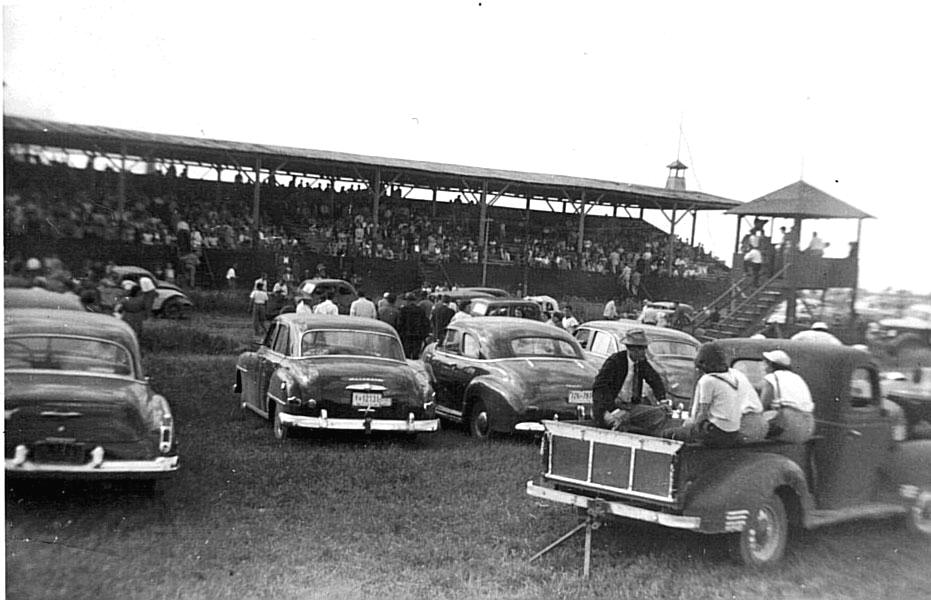
Courtesy of the FE Hart Family
The Frank Hart family
claims this is an infield shot looking at the stands at CVE. If it is,
it gives evidence to how large fair racing crowds could be.
Please email me if you have
any photos to lend me or information and corrections I could benefit from.
Please do not submit anything you are not willing to allow me to use on my
website - and thanks. Email is:
wladabou@comcast.net . For those who still don’t like computers - my
regular address is: Bill Ladabouche, 23 York Street, Swanton, Vermont 05488.
AS ALWAYS, DON’T FORGET TO CHECK OUT MY WEBSITE
www.catamountstadium.com
Return to the Main Page
Return to the Main News Page
Return to the All Links Page
Return to the Weekly Blog Links Page

